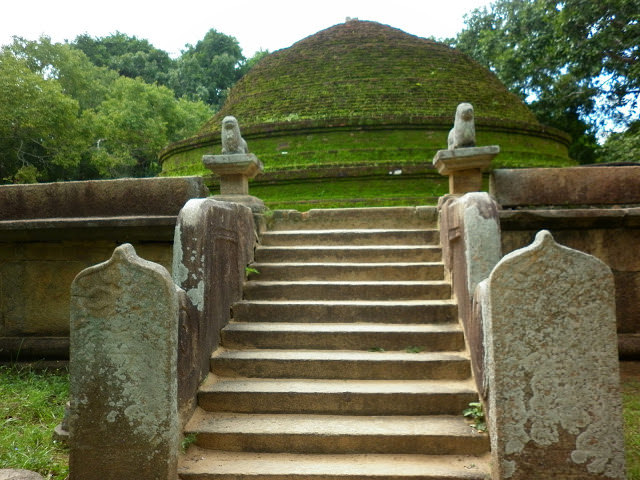OB03150 Magul-maha-vihāra Fragmentary Pillar of Vihāra-mahā-devī
Magul Maha Viharaya, Lahugala
IN03189 Magul-maha-vihāra Fragmentary Pillar Inscription of Vihāra-mahā-devī
This fragmentary inscription is engraved on three sides of a broken stone pillar found among the ruins of an ancient monastery situated in the Pānama Pattu of the Batticaloa District, about a mile to the south of the eighth mile-stone on the road from Potuvil to Vällavāya. The ancient name of this monastery was Rūṇu-maha-vehera; it is now known as Magul-maha-vihāra. The upper half of the pillar has been broken off and lost, resulting in the loss of large parts of the inscription. The record can be dated, on palaeographic grounds, to the fourteenth century. The extant portion of the inscription records that Rūṇu-maha-vehera, the ancient monastery at the site, was completely renovated by Vihāra-mahā-devī, the consort of the two brother kings named Parākramabāhu, after it had fallen into ruin and that she endowed it with lands for its maintenance. It seems that the inscription originally included a detailed account of the successful campaign fought by the brother kings after the Coḷa army but the inscription is mutilated just at the point where the reference to this historical event begins. The pillar was apparently set up after the demise of these kings, since the inscription tells us in the past tense that Vihāra-mahā-devī ‘was the chief consort of the two brother kings’. Since these brothers are described as ruling over Rohaṇa in another inscription found at Magul-maha-vihāra (IN03188), it seems likely that they were local princes whose authority was confined to this region, rather than paramount sovereigns of Sri Lanka.
OB03149 Magul-maha-vihāra Slab of Vihāra-mahā-devī
Magul Maha Viharaya, Lahugala
IN03188 Magul-maha-vihāra Slab Inscription of Vihāra-mahā-devī
This inscription is engraved on a stone slab found to the left of the flight of steps at the entrance to a ruined structure on the site of an ancient monastery situated in the Pānama Pattu of the Batticaloa District, about a mile to the south of the eighth mile-stone on the road from Potuvil to Vällavāya. The ancient name of this monastery was Rūṇu-maha-vehera; it is now known as Magul-maha-vihāra. The present inscription can be dated, on palaeographic grounds, to the fourteenth century. It is written as a palimpsest over a long tenth-century inscription which has thus been obliterated, save for thirteen lines at the end. The later inscription records that Rūṇu-maha-vehera, the ancient monastery at the site, was completely renovated by Vihāra-mahā-devī, the consort of the two brother kings named Pärakumbā, after it had fallen into ruin and that she endowed it with lands for its maintenance. Since these brothers are described in this inscription as ruling over Rohaṇa, it seems likely that they were local princes whose authority was confined to this region, rather than paramount sovereigns of Sri Lanka.
